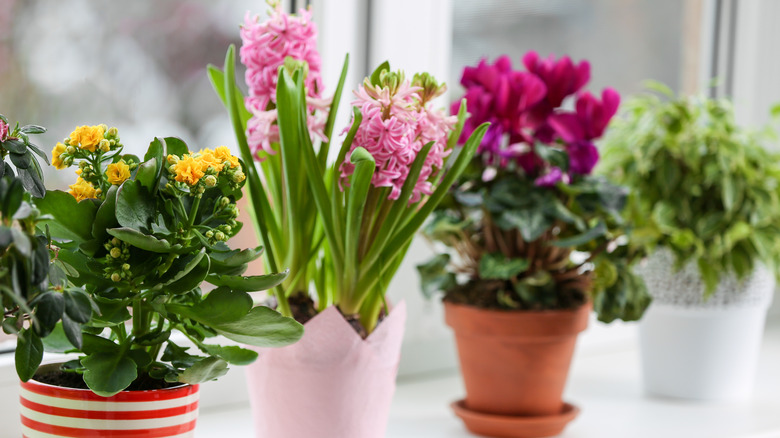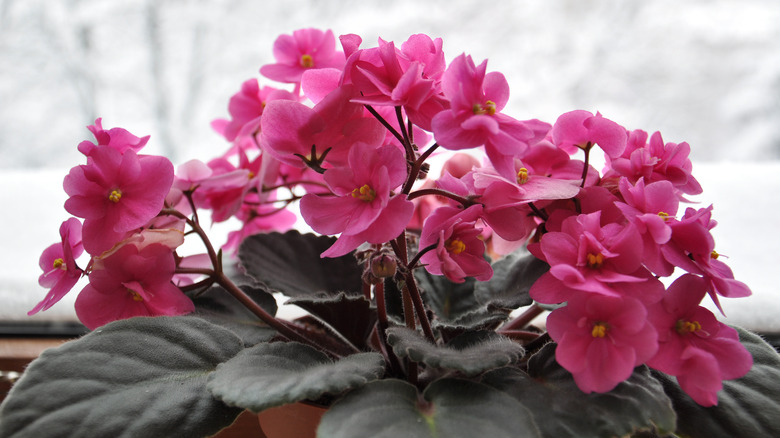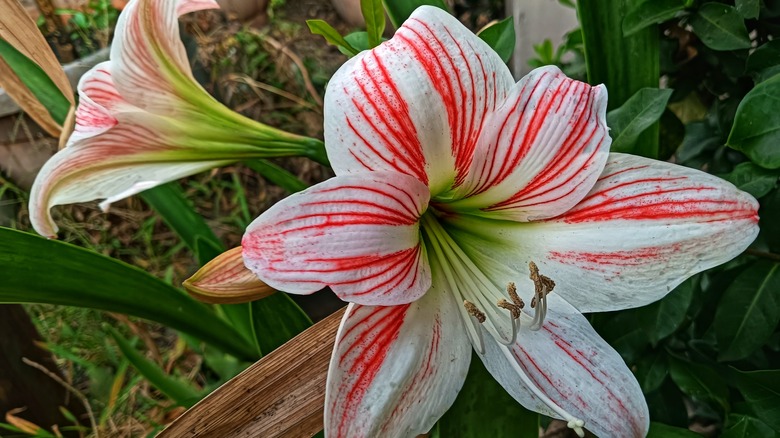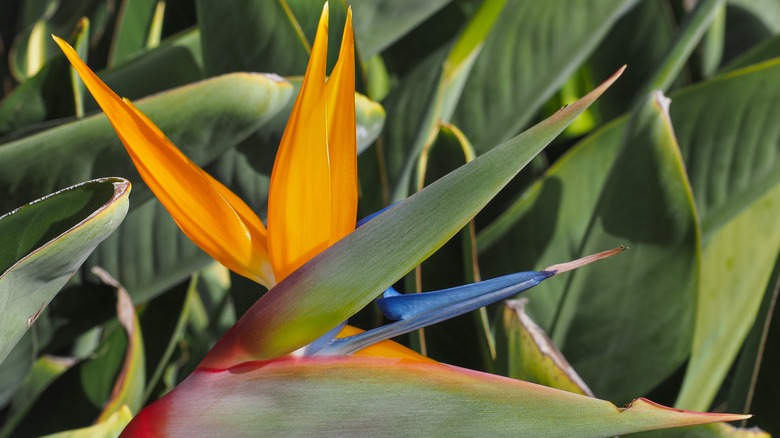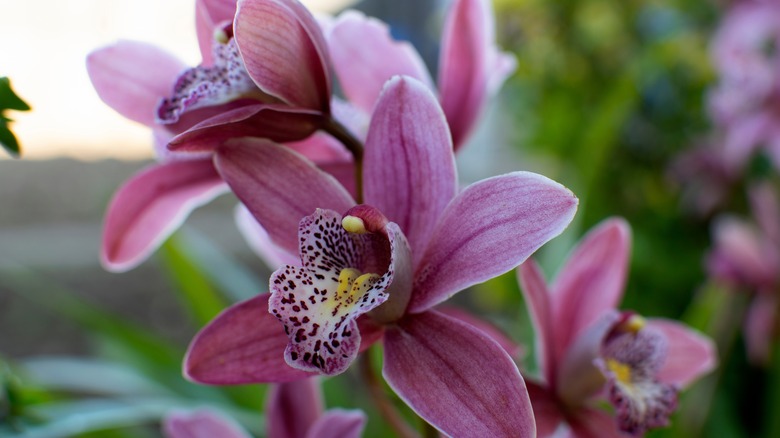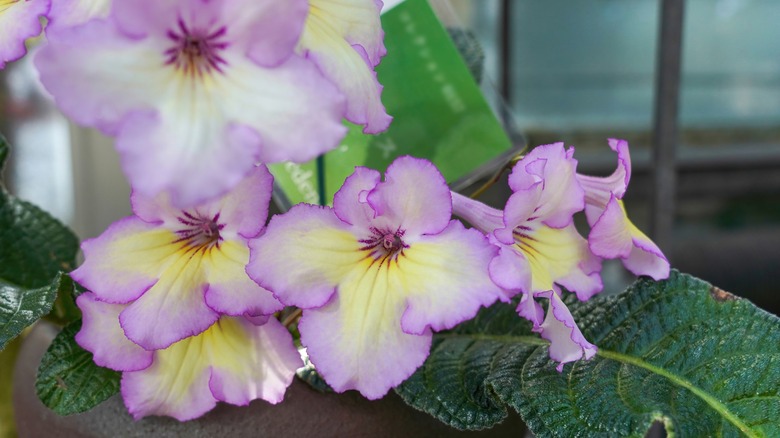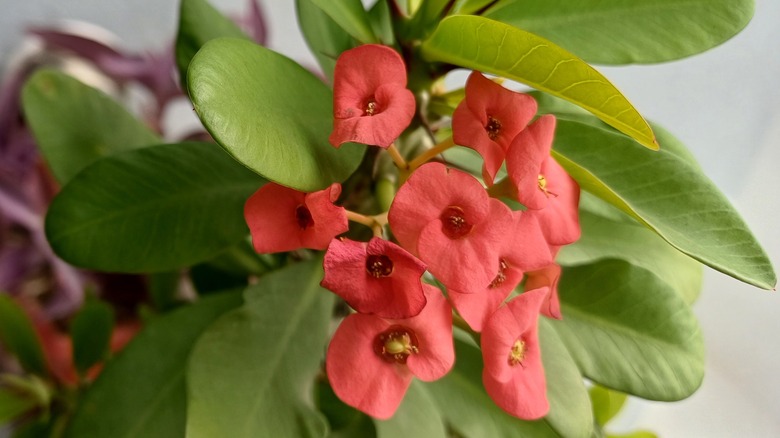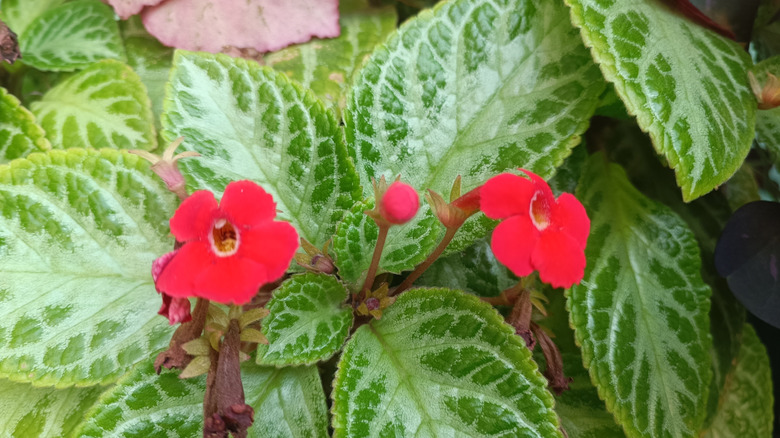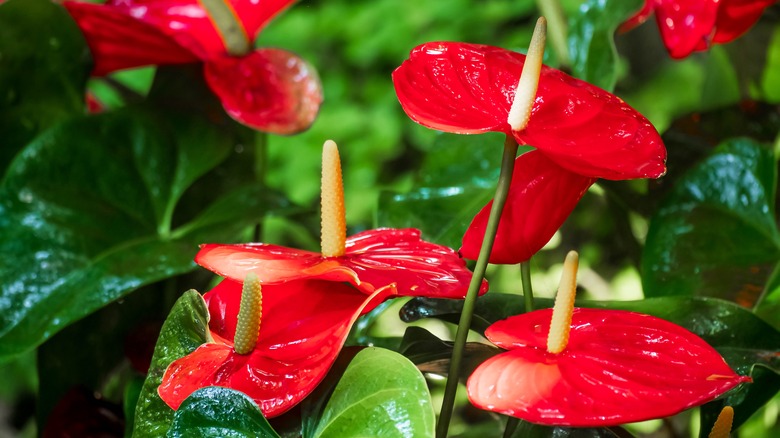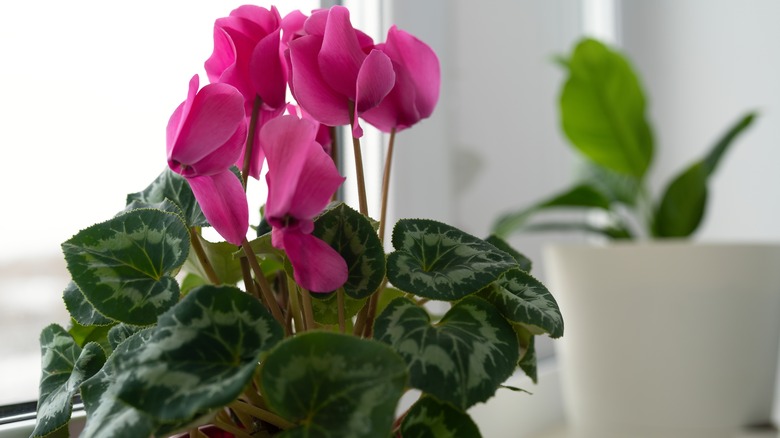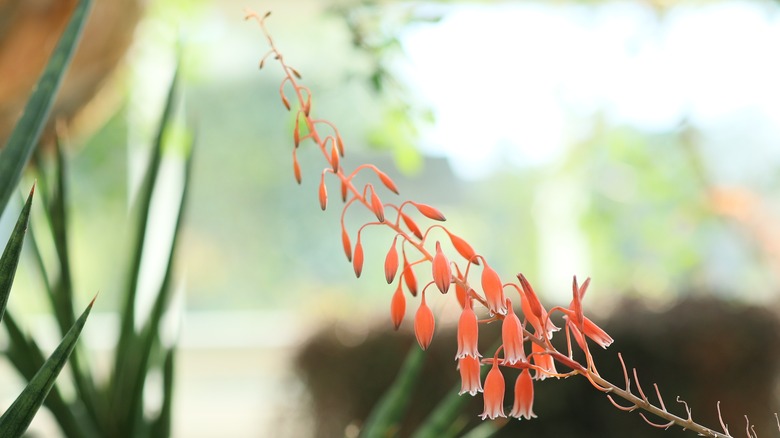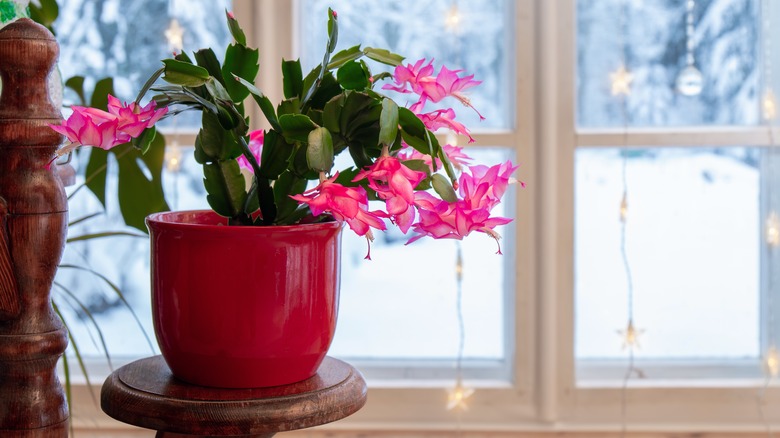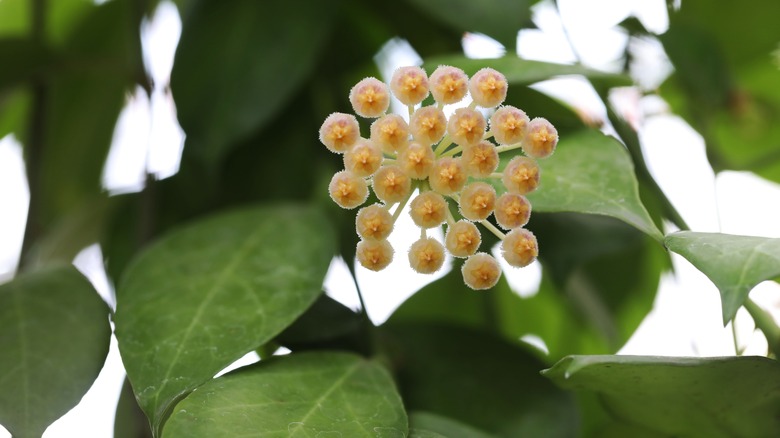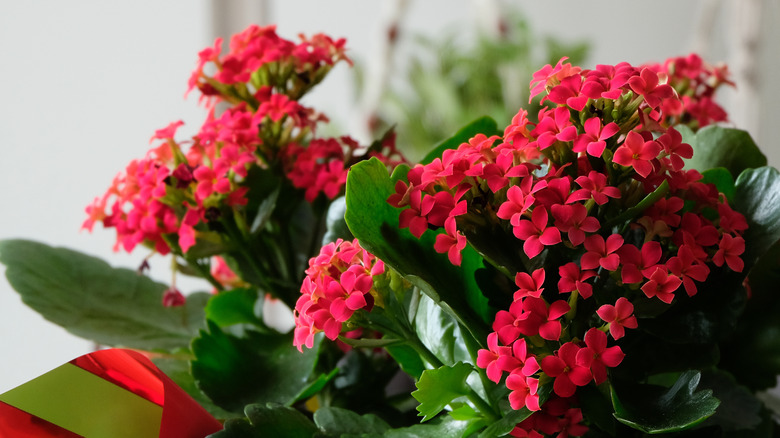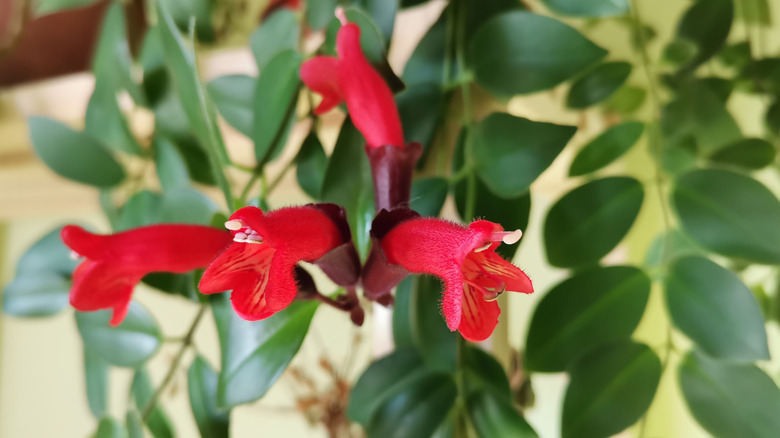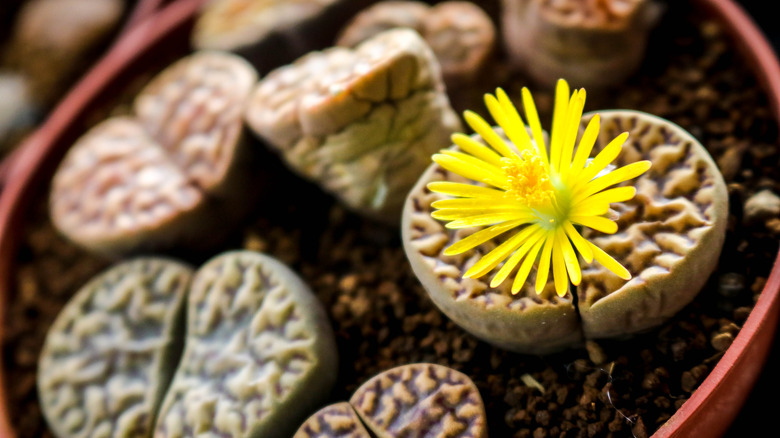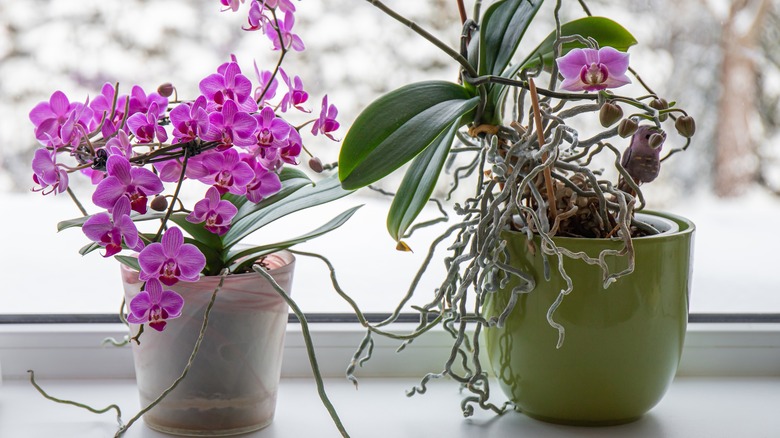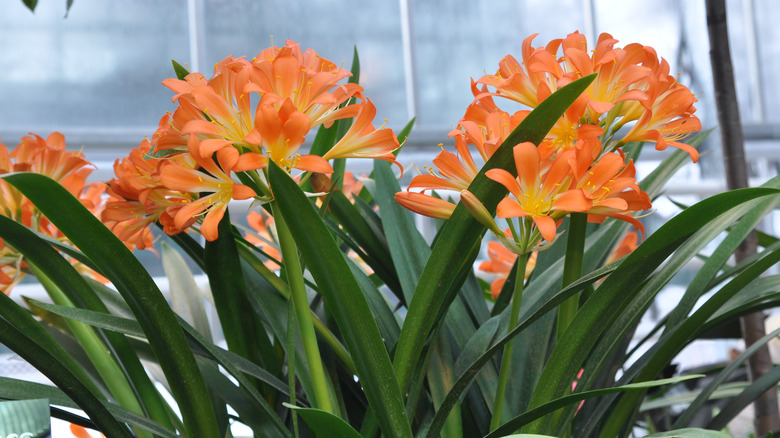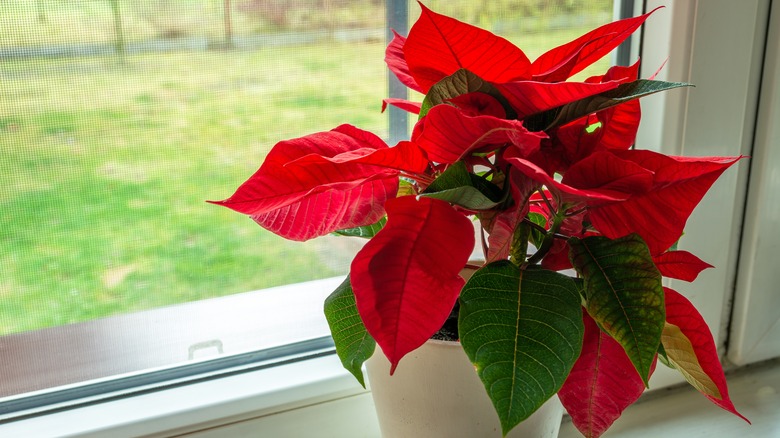18 Flowers That Grow Beautifully Indoors During Winter
When winter brings snow and clouds, we can't help looking for ways to brighten up our days spent indoors. Houseplants can help us reconnect to the outdoors when we're stuck inside, and when those plants bear flowers, it can feel like a small miracle. There are many indoor blooming plants to brighten up our homes — and more than you would think that flower during winter. You are probably already familiar with some of the plants you can grow indoors for winter blooms, such as African violets, amaryllis, and poinsettias. But there are some others you may have never heard of before, like crown of thorns, natal lilies, and Cape primrose.
Of course, in order to produce and sustain the beautiful flowers that will lift us out of our winter doldrums, all of these plants have growing needs that must be met. You'll learn about these needs for the following selections. So that you know where you'll be able to situate these indoor marvels of nature, you'll also learn their expected sizes. And whether you're looking for a festive flower to help celebrate the winter holidays or something with a tropical feel that will mentally transport you to warmer climates, you'll find a selection of bloom colors and shapes for both of these purposes.
African violet
African violets (Streptocarpus ionanthus) are compact plants that bear showy flowers in a gentle color palette of blue, purple, pink, or white. These plants can bloom at any time of the year, including during winter. African violets are generally considered low or medium maintenance plants, and they need indirect, bright light. To encourage their beautiful blooms, apply fertilizer specifically for African violets as directed on the package, and grow the plants in petite pots. Another charm of African violets is that, being non-toxic, they're considered safe for households with cats and dogs.
Amaryllis
Also known as naked lady flower bulbs, Amaryllis (Hippeastrum spp.) are frequently offered as festive gifts during the Christmas holiday season. Grown from bulbs, amaryllis produce large, funnel-shaped flowers on long, straight stems, adding splashes of red, pink, orange, or white to homes during the winter months. Indoors, amaryllis bloom from winter to spring, and need bright conditions with at least a few hours of direct sun. Houseplant lovers take note — not everyone realizes that you can save your amaryllis bulbs to grow more beautiful blooms next year.
Bird of paradise
For those looking for indoor flowers with tropical vibes, bird of paradise (Strelitzia reginae) plants are an excellent option. These plants reach up to 4 feet tall and wide, and can bloom throughout the year, including during winter. Bird of paradise blooms are 6 inches wide or larger, and consist of beautiful, orange and blue flower parts that might remind you of a bird's head. To encourage winter blooms, grow bird of paradise plants in bright light with at least two hours of direct sun from autumn through spring. In summer, protect these plants from direct sun.
Boat orchid
Experienced growers of indoor plants may want to try growing boat orchids (Cymbidium spp.). These houseplants require some maintenance, but pay off with spectacular, long-lasting blooms. Boat orchids' fragrant flowers appear in shades of white, pink, orange, yellow, or green, and are held on spikes. Depending on the type, these plants range from small to medium sizes, with the largest of them growing to 4 feet tall and 3 feet wide. When provided with the bright, indirect light they prefer, the larger boat orchids bloom during winter and have beautiful flowers that reach up to 5 inches wide.
Cape primrose
African violet lovers may want to expand their affection to a close relative, the cape primrose (Streptocarpus spp.). With velvety green leaves and beautiful, tubular blooms in shades of blue, purple, pink, and white, cape primrose is the easy-to-grow indoor flowering plant that'll bloom in your home year round, including during winter. Reaching up to 18 inches tall and wide, these dark season bloomers are the right size to brighten up a home desk or entryway table. Let these pet-safe plants bathe in bright, filtered light or offer them direct sun from an eastern window in the morning.
Crown of thorns
Crown of thorns (Euphorbia milii) is an unusual plant that will look at home with an indoor cactus collection, thanks to the sharp spines that line the plant's stems. Along with spines, crown of thorns is also equipped with green leaves, and sports beautiful, red, pink, or yellow bracts surrounding its minute flowers. This poinsettia relative reaches two to three feet tall as a houseplant, and can bloom all year long, including during winter. To keep a crown of thorns plant blooming, grow it where it will receive at least six hours of direct sun every day.
Flame violet
Related to African violets and cape primrose, flame violets (Episcia cupreata) have beautiful, trumpet-shaped flowers and velvety leaves. Flame violets bear blooms that are red, orange, yellow, or pink, which can appear throughout the year indoors, even during winter. These squat plants reach up to 2 feet wide and 1 foot tall, making them perfect for wide windowsills. However, take care to grow flame violets in filtered or indirect light, but make sure it is bright light to assist plants in flowering. Flame violets offer festive colors and a tropical feel.
Flamingo lily
Flamingo lilies (Anthurium andraeanum) are showy plants that can bloom throughout the year indoors, including during winter. Their beautiful flowers consist of large spathes that occur in shades of red, pink, or white. These medium-sized plants are just the right size for counters or tabletops at 18 inches tall and 12 inches wide. Grow flamingo lilies in bright, diffused light to keep them healthy and blooming. The bright red spathes of these plants will add life and festivity to the winter months.
Florist's cyclamen
If your house is cool year-round, consider florist's cyclamens (Cyclamen persicum) — these winter-bloomers flourish at temperatures of 65 degrees Fahrenheit. Their delicate and beautiful flowers appear in shades of pink, purple, red, and white, and are held on plants that reach 9 inches tall and wide. Sadly, these indoor plants often needlessly end up in the compost pile because florist's cyclamens go dormant and lose their leaves during the summer. In addition to growing them in indirect, bright light, let the top of the soil dry between waterings, and reduce watering during the summer dormancy period.
Gasteria
Also known as ox tongues for their leaf shapes, gasterias (Gasteria spp.) are one of the houseplants that thrive in dry climates. There are 26 gasteria species, with leaves arranged in rosettes or like fans. Some gasteria plants are quite small, reaching just 3 inches tall and wide. However, when winter comes, these succulent plants produce lofty flower stalks hanging with beautiful, tubular, red, orange, or pink flowers. Gasterias don't require as much direct sun as some other succulents, making them easy indoor bloomers. Grow gasterias in bright light with a few hours of direct sun in the morning.
Holiday cacti
A showy source of Christmas-time flowers for some and a gateway succulent for others, holiday cacti (Schlumbergera spp.) are popular because they're such low-maintenance indoor plants. Producing beautiful, tubular blooms at the ends of leafless stems, Thanksgiving and Christmas cacti brighten up winter with indoor flowers that are white, yellow, orange, red, pink, or purple. These pet-friendly plants are available at small sizes of 6 inches tall, while plants mature to a height and spread of 3 feet when ideal care is provided. To enjoy many years of holiday cactus blooms, grow plants in bright, indirect light.
Hoya
With hundreds of species and many cultivars, hoyas (Hoya spp.) are easy-to-grow houseplants that produce beautiful flowers. Known for their incredible fragrances, you can get all-natural scents in your home by growing different kinds of hoyas. Many types of hoyas bloom during the winter, such as H. linearis, 'Sunrise,' and H. lacunosa. Most hoya vines reach at least 2 feet long, but some species have vines that reach 6 feet long indoors. Hoyas need bright, filtered light and a few hours of direct sun as well each day to promote blooming.
Kalanchoe
With beautiful and showy clusters of flowers and succulent green leaves, kalanchoes (Kalanchoe blossfeldiana) offer splashes of pink, red, orange, yellow, or white to brighten up winter days indoors. These plants mature at 18 inches tall and 12 inches wide, but smaller specimens at just 6 inches tall are easy to find, too. Kalanchoes grow best in bright light, and flourish on windowsills where they will receive at least two hours of direct sunlight each day. To keep kalanchoes flowering year after year, in fall make sure the plants get 14 hours of darkness each night for six weeks.
Lipstick plant
An excellent choice for an indoor jungle whether you're looking for festive colors or a rainforest feel, lipstick plant (Aeschynanthus radicans) is a vining plant that bears beautiful, tubular red flowers throughout the year, even during winter. Lipstick plants are perfect for growing in hanging baskets, with leafy vines that reach up to 3 feet long. To keep lipstick plants healthy, offer them bright, indirect light, high humidity, and temperatures between 65 and 70 degrees Fahrenheit. Keep the plant in a slightly cooler room during winter to encourage flowering.
Lithops
If you're looking for a tiny flowering indoor plant and have plenty of bright sunshine, add lithops (Lithops spp.) to your list. Also known as living stones, lithops can be as small as 1 inch tall and wide. These succulents are loved for their wide range of colors and patterns, as well as their beautiful and cheerful flowers, similar to those of daisies. There are many different types of lithops, and some bloom during winter. As indoor plants, grow lithops plants with at least five hours of direct sun and water only when the soil is completely dry.
Moth orchid
Moth orchids (Phalaenopsis spp.) are one of the types of orchids that make the easiest houseplants. These orchids flower during the winter months indoors, providing long-lasting and beautiful blooms. Moth orchid blooms can measure 3 to 6 inches wide and occur in a wide array of colors and patterns. They are held on long, narrow stems arising from a group of leathery, green leaves. These plants usually reach no more than 24 inches tall, including the flower spike. Grow moth orchids in bright, indirect light and take care to only repot with orchid potting medium.
Natal lily
With glossy, dark green leaves and beautiful, clusters of flowers, natal lilies (Clivia miniata) really brighten up gloomy winter days — their orange blooms will make you feel like summer moved indoors. These medium-sized plants are related to Amaryllis plants, and they bear flowers from winter to spring. Grow indoor natal lily plants in direct morning sun, along with bright, indirect light the rest of the day. These plants require special attention for flowering — they need a dormancy period of up to 2 months in cool nighttime conditions.
Poinsettia
The poinsettia (Euphorbia pulcherrima) is a fixture of the winter holiday season that adds beautiful indoor color. Poinsettia's small yellow flowers are usually surrounded by red bracts, although there are many varieties in white, pink, gold, speckled, and marbled. Expect plants that grows to 2 to 3 feet tall and wide indoors, making them perfect for tables or countertops. To stay healthy, poinsettias need bright light with up to 6 hours a day of direct sunlight. For those hoping to enjoy a poinsettia's color year after year, provide it with a dormant period with little water during spring.
